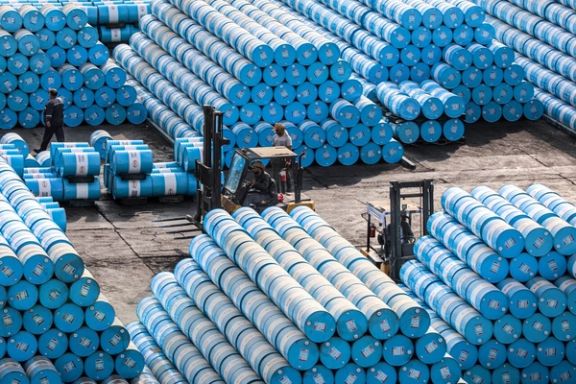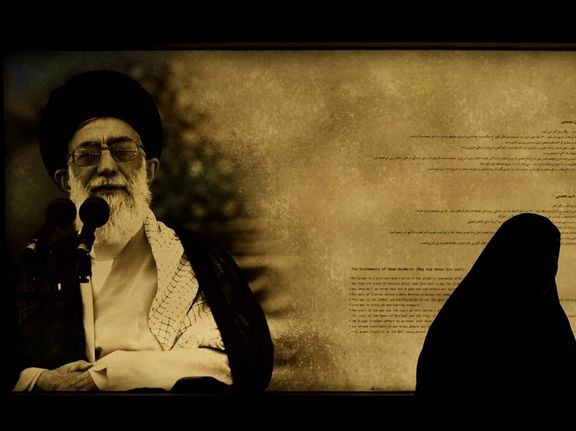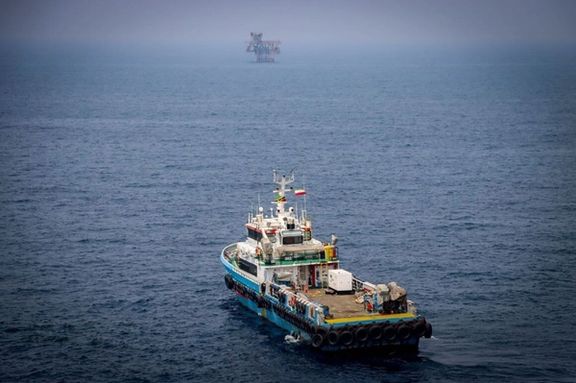Related Articles

Iran’s economy has slipped into its first contraction in more than four years and now faces mounting debt and record capital flight, official data show, days before UN sanctions are due to return.
According to the Statistical Center of Iran, GDP shrank by 0.1% in the spring, ending 17 straight quarters of expansion. Industrial and mining output, which grew 5.9% last spring, fell to -0.3% this year, while agriculture plunged from +2.3% to -2.7%.
Severe water and electricity shortages disrupted production across both sectors, hitting farms and factories alike.
With the so-called snapback of international sanctions due on September 2, Iran faces a narrowing path to growth—and a worrying prospect of rising unemployment and public discontent.
Mounting debt
A separate Central Bank report shows government debt to the bank surged 63% year-on-year as of June, reflecting the administration’s failure to meet revenue targets.
Officials say only 60% of projected revenues were generated in the first five months of the year, worse than in previous years and well short of the levels needed to stabilize public finances.
Since 2018, when President Donald Trump withdrew the United States from a 2015 nuclear deal and reimposed sanctions, about a third of Iran’s annual budget has gone unrealized.
The IMF now estimates public debt at 37% of GDP and climbing. This trend is likely to accelerate if sanctions further limit oil revenues.
Record capital flight
The Central Bank also reported a net capital account of -$21.7 billion for the last fiscal year—the highest on record and 2.5 times greater than in 2020.
Capital flight has been accelerating since 2020, as businesses and households move assets abroad to escape currency depreciation and political uncertainty.
The scale of outflows highlights both a collapse in investor confidence and the inability of the banking system to hold foreign exchange inside the country.
Oil gains vanished
Iran earned $66 billion from oil, petroleum products and natural gas exports last year, a 17% increase. Including non-oil goods, total exports reached $115 billion, $27 billion more than imports.
On paper, that left the goods trade in surplus.
But the services sector recorded a record $12 billion deficit, dragging the overall trade balance for goods and services down to just $13 billion.
Combined with the $21.7 billion in capital flight, much of the hard currency generated by oil exports is effectively leaving the country.
The result is sustained pressure on Iran’s already fragile foreign reserves and further instability in the rial, which hit a record low of 1.08 million to the dollar on Thursday.
The bottom line is that Tehran’s extremely hard-gained oil cash is being wiped out by falling output, runaway debt and unprecedented capital flight—leaving the country perilously exposed just as fresh sanctions loom.

Seven years after Donald Trump quit the nuclear deal, his duel with Ali Khamenei looks lopsided: the US president spoke from New York with renewed leverage, while Iran’s leader replied in taped defiance that evinced more strain than authority.
Khamenei’s televised speech on Tuesday captured both his persistence and his weakness.
Shortly before, Trump told a packed United Nations that Iran's "so-called" Supreme Leader had spurned a US offer of full cooperation in exchange for suspending its enrichment of uranium.
The rasping 86-year-old leader repeated that uranium enrichment is Iran’s sovereign right and dismissed negotiations with Washington as futile, but the context was unmistakable: nuclear sites had been struck, senior commanders lost and the economy reeled after a 12-day Israeli-American war in June.
The timing made clear that the speech was taped hours earlier before Trump had even spoken, and Khamenei’s delivery relied on hand-scribbled notes.
What was presented as a rebuttal was in fact a prepared monologue, more an appeal to a weary population than a real-time answer to Washington.
Turning point: Soleimani
The confrontation has followed a familiar rhythm.
In September 2018 Trump told the UN the US had quit the “horrible” nuclear deal, restored sanctions and denounced Tehran as the “world’s leading sponsor of terrorism.” Days later, Khamenei addressed crowds in Azadi Stadium, boasting of an unbroken axis from Yemen to Gaza.
The following year, protests over fuel hikes revealed cracks at home, and on January 3, 2020, an American drone strike killed Qassem Soleimani, Khamenei’s most trusted lieutenant and the architect of Iran’s proxy network.
By September 2020 Trump was still boasting of Soleimani’s death and tightening sanctions, while Khamenei deflected with reminders of Iran’s endurance during the Iran-Iraq War embargo.
Fractured command
Fast forward to September 2025: Trump once again denounced Iran from the UN podium. Hours later Iranians heard Khamenei’s taped message—defiant, but less an assertion of command than an effort to buy time for a regime battered by war, inflation, and looming snapback sanctions.
Between June 12 and 24, 2025, Israel launched a sweeping air campaign against Iran, killing nuclear scientists along with hundreds of civilians and military personnel. Iran retaliated with volleys of drones and missiles. But the upshot was unmistakable.
Khamenei vanished from public view for nearly three weeks and has appeared only sparingly since. His speech on Tuesday sounded less like triumph than a plea for stamina from a population strained by sanctions and conflict.
In late August 2025, the E3 (Britain, France, Germany) triggered it, citing Iran’s growing stockpile and obstruction of inspections. On September 19, the Security Council failed to adopt a draft to offer relief, meaning all UN sanctions are set to return on September 28.
On borrowed time?
Khamenei spoke against this backdrop of dwindling external support and exposed vulnerabilities. Hopes of Russian and Chinese protection have proven illusory, and Israel’s strikes stripped away the proxy shield that once kept Iran at arm’s length from direct confrontation.
The Islamic Republic—the “system” in Iran’s official parlance—now leans on survival tactics: smuggling networks, repression and symbolic defiance, reminiscent of Saddam in the 1990s.
Tehran seeks to wring advantage from global distractions, from the US-China rivalry to Europeans’ recognition of Palestine. Yet harsh realities persist: a broken economy, an alienated populace and the specter of renewed confrontation.
After the June war, thousands more were arrested—including many from Iran’s Jewish community — on suspicion of collaboration with Israel. At least nine people have been hanged on such charges since October 7, 2023, according to the Oslo-based Iran Human Rights Organization.
Khamenei’s defiant message hardly offered a way out. It functioned more as reassurance to his circle and propaganda for the base—another effort to buy time.
The veteran theocrat's latest message served more as reassurance to his circle and propaganda for the base than as a real strategy. It showed him boxed into a mentality that time can be bought through attrition.
The reckoning ahead will decide whether his persistent defiance can prolong the ruling system, or whether sanctions, airstrikes and popular anger will force concessions that no rhetoric can forestall.

Iran's push to modernize its oil industry through artificial intelligence and advanced drilling techniques faces daunting old obstacles from restricted access to technology to mounting financial constraints which have dogged exports for years.
National Iranian Oil Company (NIOC) chief Hamid Bord in a February speech set an ambitious target of raising production by 400,000 barrels per day (bpd) this year, putting AI and digital reservoir management at the center of the plan.
These tools use data modeling and automation to map underground reserves, optimize drilling, and improve recovery rates from aging fields.
Bord urged Iran’s knowledge-based firms to launch pilot projects for smart drilling and enhanced recovery, hoping to boost output despite sanctions and isolation.
More than six months later the vision remains unrealized, with exports roughly steady at around 1.7 million bpd with stiff US sanctions only increasing since the return of US President Donald Trump and his so-called maximum pressure sanctions in January.
Major obstacles
The gap between high-tech ideas and field-level execution remains wide.
Early trials have already exposed operational problems and underscored the heavy responsibility on NIOC to turn innovation into results.
The cash required for such projects is also scarce. Whatever capital is available is drained away by aging infrastructure, maintenance backlogs, surging domestic demand and sanctions that block access to equipment.
Iran hemorrhages the value of about four out of every five barrels of oil it manages to export, a former senior US Treasury official told Iran International last week, as sanctions forced funds to be lost in corrupt smuggling networks.
Tehran casts this push as part of a broader sanctions-resilience strategy.
By investing in high-tech solutions and formalizing technology integration, it hopes to build an advanced, adaptable export network more resilient to blockade or interception.
Expanding capacity through digitization also carries geopolitical stakes: more barrels could strengthen Iran’s position within OPEC and global markets, offsetting its diplomatic isolation.
But scaling innovations in Iran’s difficult oilfields is another matter.
Many startups lack the resources and experience to apply their technologies at scale, leaving NIOC to supervise integration in hostile operating conditions.
Rising gas consumption—already above one billion cubic meters daily—is adding to the strain, diverting investment from oil exports and worsening supply-demand imbalances.
Big prize, little chance
If those hurdles can be overcome, the payoff would be significant.
Advanced drilling and AI-driven recovery could extend the life of aging fields, stabilize revenues and reduce reliance on costly new reserve exploration. Building a knowledge-based ecosystem might also diversify the economy, generate jobs, and spur research and development.
Limited international partnerships, including with European universities, provide channels for technology transfer and best practices, blending local innovation with selective global input.
Iran’s tech-driven oil strategy reflects determination to sustain its role in global energy despite sanctions and isolation. But its success hinges on closing the gap between vision and implementation while managing surging domestic demand—a tall order as UN sanctions are set to snap back within days.

In Tehran today, debate over Supreme Leader Ali Khamenei’s hardline stance on nuclear negotiations carries an unmistakable echo of the end of Iran’s eight-year war with Iraq in 1988.
Then, as now, Iran faced a grinding impasse: Supreme Leader Ruhollah Khomeini resisted UN Resolution 598 which called for an end to hostilities until the cost of defiance became unbearable.
The resolution, passed on July 20, 1987, demanded a ceasefire, prisoner exchanges and a return to recognized borders.
Saddam Hussein accepted immediately. Khomeini refused, vowing that “the war should continue until the end of all seditions in the world.”
Washington warned of sanctions, and then-President Ali Khamenei told the UN General Assembly Iran was “determined to punish the aggressor.”
‘Poison chalice’
The war dragged on another year, draining finances and costing thousands more lives.
By August 1988, even then-Revolutionary Guards commander Mohsen Rezai conceded it was unsustainable. Morale had collapsed, tens of thousands were dead and Iran’s military capabilities shattered.
Khomeini finally relented, confessing that accepting Resolution 598 was “more deadly than drinking from a poisoned chalice.”
The phrase became a metaphor for concessions made too late, when pride collides with reality.
That poisoned chalice haunts Iran again.
No turning back
After the 12-day war with Israel, many in Tehran urged the leadership to abandon uranium enrichment and open direct talks with Washington, arguing only such a step can relieve Iran’s economic misery.
Yet Khamenei remains unmoved, caught between hardliners demanding defiance and moderates pleading for pragmatism.
Fond of channeling his predecessor, Khamenei had likened agreeing to a 2015 nuclear deal as drinking from that same poison chalice.
The IAEA continues to demand answers on uranium reserves. The Trump administration insists Iran’s nuclear program has been dismantled and warns against escalation.
Israel, emboldened by its strikes on Tehran and regional proxies, demands not only an end to Iran’s missile program but at times even regime change. Europe has its own conditions for halting or delaying the snapback of sanctions.
'Slap in the face'
On Tuesday, on the eve of President Masoud Pezeshkian’s address to the UN General Assembly, Khamenei poured cold water on any hope of reconciliation, effectively torpedoing the president’s diplomatic message before it was delivered.
Doubling down on a red line, he declared: “Negotiating with the United States under the current conditions carries harms for Iran, some of which are irreparable ... This is not negotiation, this is dictation.”
Hours earlier, Trump had mocked him at the UN as Iran’s “so-called” Supreme Leader. Khamenei shot back that Iranians would “give a slap in the face to the person" making arrogant demands of Iran.
Inside Iran, moderates call for dialogue, while hardliners close to Khamenei, including the editor of the state-funded Kayhan newspaper, deride them as “kissing Trump's bottom.”
The result is paralysis.
For Khamenei, the options appear stark: war or negotiation. A years-old quote of his "neither war nor negotiation" was not long ago plastered as a mural on a Tehran high-rise. But history suggests delay carries its own cost.
In 1988, the poisoned chalice was forced upon Khomeini only after Iran’s military was exhausted, its economy shattered, and its people demoralized.
Today, the risk is that Khamenei repeats the same mistake—clinging to defiance until the only choice left is abject humiliation.
When Iranian President Masoud Pezeshkian took the podium at the United Nations General Assembly last year, he presented himself as a reformist leader promising “national empathy,” constructive global engagement and an end to conflict through dialogue.
In his 2024 speech, Pezeshkian denounced Israel over its war in Gaza, accused it of genocide, and called for a referendum allowing all Palestinians -- Muslims, Christians and Jews -- to decide their future.
He stressed that Iran had never initiated a war and sought lasting peace and stability in the Middle East, while condemning US sanctions as “inhumane weapons” against the Iranian people.
He also urged full implementation of the 2015 nuclear deal, from which Washington withdrew in 2018, warning that Donald Trump’s so-called maximum pressure only deepened insecurity. “If JCPOA commitments are implemented fully and in good faith, dialogue on other issues can follow,” he told delegates, signaling openness to diplomacy.

A year later, Pezeshkian returns to New York under far darker circumstances.
In June, Israel fought a 12-day war with Iran, ending in US strikes that wrecked several of Tehran’s key nuclear sites. Iran says much of its enriched uranium stockpile now lies buried under rubble.
Months before the Iran-Israel war, the UK Parliament’s House of Commons Library said in a January 2025 report that Tehran’s regional alliances were already weakened. It said Hamas and Hezbollah had lost leaders in Israeli strikes, while Syria’s Assad government collapsed in December, leaving Iran’s network of partners militarily diminished.
Following the conflict, the European parties of the 2015 nuclear deal activated a 30-day “snapback” process at the United Nations, due to reimpose sanctions on September 28, and stoked debate in Tehran over leaving the Nuclear Non-Proliferation Treaty.
While IAEA chief Rafael Grossi says cooperation with inspectors has not been officially suspended, he acknowledged “different voices” in Iran calling for such a step.
The standoff has left diplomacy on a knife edge, with Western envoys pressing Tehran to allow inspections and restore trust as sanctions loom.
As Pezeshkian prepares to deliver his 2025 address on Wednesday, he faces mounting economic strain at home, international isolation and speculation over whether he will soften or harden Iran’s stance in the wake of war.
